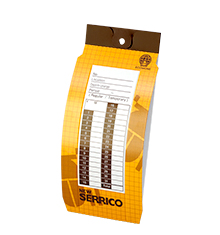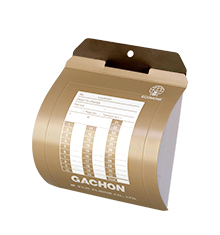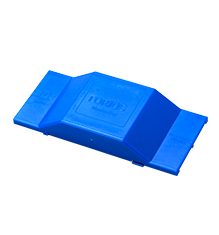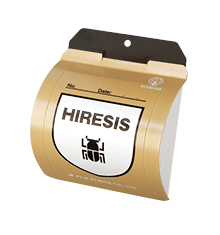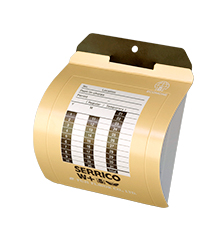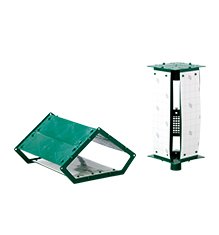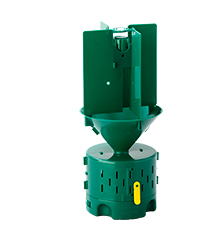- TOP
- Ecomone Products
- Search for Ecomone Products
- NEW WINDSPACK

NEW WINDSPACK
Business useAgricultural insects
- Trap for monitoring scarab beetles
- Scarab beetles have wide feeding habitats, including golf courses, orchards, vegetable fields, and horticultural facilities where they directly or indirectly attack raw produce by eating and destroying roots, leaves, and flowers. NEW WINDSPACK is designed to meet those beetles' habit and characteristic features and excellent for effective monitoring.
- List of documents
Target Insects
Features of NEW WINDSPACK
01A reusable trap for predicting the emergence of pests
The traps can be reused by replacing the lures.
02Easy to set and use
Assembly and setting are simple. Captured insects are easier to remove now that the opening has been made five times larger than the older model.
03Improved capturing performance
The capacity of the container can be adjusted in two stages based on the situation. The trap can be set closer to the ground by choosing a smaller capacity, which will increase the capture rate of low-flying beetles.
How to Use



Installation method
Trap setup (bottle)



Trap setup (lure holder)




Trap setup (bottle & lure holder)







Example
(A) Suspending from a tree
(Make sure it is not concealed by leaves)

(B) Suspending from a poleNote: Recommended heights are the same for both tree and pole suspension


- Set in a well-ventilated location. (If set in a woods or other area with poor air circulation, it may not perform adequately.)
- An attraction range of from 50 to 100m can be expected as a general rule.
- Adjust the trap height depending on the target species of beetle.
- Dispose of the captured insects before the trap becomes full. If captured insects are left in the trap for an extended time, they will decompose and reduce the attraction effectiveness. (At peak emergence times, the trap can become full in one day.)
- Note: When using NEW WINDSPACK for multiple species at the same time, setting lures too close together may cause cross-interference. Keep the traps at least 20m apart.
- Use within the designated shelf life.
- Avoid sunlight and store at room temperature in a dark place. An exception is the lure for Japanese mealybugs, which should be sealed tightly and stored in a refrigerator (at around 5°C).
Packaging
Device set
Devices and lures (different for each insect species), holders/package
Lure set
Lures (different for each insect species), holders/package

Types of lures
| Target insects | Suggested location | Product specifications | Installation height | ||||
|---|---|---|---|---|---|---|---|
| Replacement | Shelf life | Tablet | Bottle | Lure | |||
| Japanese beetle | Lawn maintenance, growing beans or grapes | 2-3 months after opening |
1 year after manufacturing |
○ | ○ | Sex pheromone Food attractant |
Around 1 meter above ground |
| Soybean beetle | Lawn maintenance, growing beans or grapes | ○ | ○ | Sex pheromone Food attractant |
Around 1 meter above ground |
||
| Japanese beetle Soybean beetle*1 | Lawn maintenance, growing beans or grapes | ○ | ○ | Sex pheromone Food attractant |
Around 1 meter above ground |
||
| Cupreous chafer | Lawn maintenance, growing beans or grapes | ○ | ○ | Sex pheromone Food attractant |
Around 1 meter above ground |
||
| Anomala octiescostata | Lawn maintenance | ○ | ― | Sex pheromone | Close to ground | ||
| Oriental beetle | Lawn maintenance, growing flowers | ○ | ― | Sex pheromone | Close to ground | ||
| Green chafer*2 | Lawn maintenance, growing beans, grapes or other fruits | ○ | ― | Sex pheromone | Around 1 meter above ground |
||
- In areas with many soybean beetles present, use the soybean beetle lure.
- Useful for early detection of Green chafer. After that, the number of insects captured will decrease due to the biology of the target insect.
